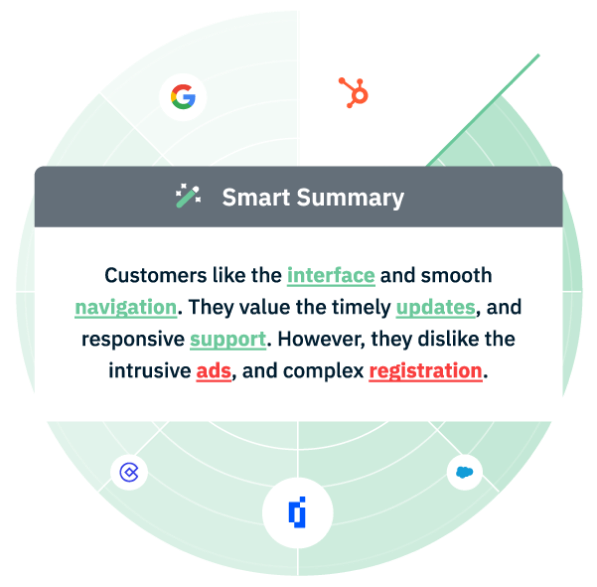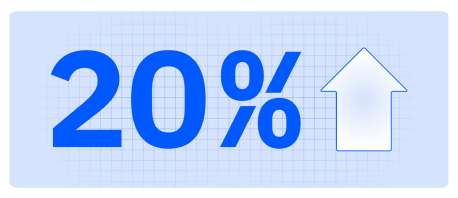An interview with Paul Barba
NLPs, LLMs, and the Future of Artificial Intelligence


Author
Paul Barba
Who is Paul Barba?:
Paul Barba is the Chief Scientist at InMoment, and the driving force behind InMoment’s CX solutions. He’s a renowned expert in artificial intelligence, NLPs, and LLMs, with numerous achievements and accolades in the field to date. His expertise is a testament to the industry-leading CX solutions we offer.
Intro
Artificial intelligence needs no introduction. In the past few years, it’s shaken the foundations of every industry and business sector with no signs of waning. Your competitors already have, or are in the process of, figuring out how to best integrate it into their entire ecosystem, to expedite, streamline, and grow their businesses. Staying ahead of them (or edging them out), requires continuous innovation and a deep understanding of both the technology and how it relates to your business needs.
Paul Barba, a renowned expert in artificial intelligence and a driving force behind InMoment’s Insights and CX solutions, provides invaluable insights into AI, NLP (Natural Language Processor), and LLMs (Large Language Models), and how InMoment’s ecosystem leverages them to drive customer acquisition, retention, and growth. With numerous accolades and a track record of pioneering advancements in the field, Paul’s expertise is a testament to the industry-leading solutions we offer.
With Paul’s help, we’ll explore the unique features and capabilities of InMoment’s NLP, how it addresses specific business problems, and the boundless benefits it brings to customers. We’ll also delve into the integration of LLMs and their pivotal role in extracting and analyzing information from business reviews and local listings.
Before we jump in, we’re dedicating our pre-interview section to defining and extrapolating on the role NLP and LLMs play. If you have a working knowledge of these topics already, feel free to skip to our Q&A section. Let’s dive in!

Some Quick Context
Natural Language Processing (NLP) is a branch of artificial intelligence that enables machines to understand, interpret, and respond to human language. It has become indispensable to businesses in the last decade, driving efficiencies and insights across various sectors by handling the complexities and nuances of human language with unmatched precision. From sentiment analysis and entity recognition to advanced text summarization, NLP solutions empower businesses to harness the full potential of their data—structured, unstructured, and semi-structured.
One of the most transformative advancements in NLP technology is the incorporation of Large Language Models (LLMs). LLMs, like Chat GPT-4, significantly enhance NLP capabilities by leveraging vast amounts of data to improve both language understanding and generation. These models are particularly adept at processing unstructured data from diverse sources, such as business reviews and local listings.
The role of LLMs in our NLP technology is critical for our own customers. Business reviews, local listings, call center transcripts, and surveys are rich with valuable insights and data that can shape brand perception and seriously influence customer decision-making—and ultimately, their bottom line. Traditional NLP methods might miss the subtleties and context within these texts, but LLMs excel in capturing and interpreting these details. This enables our technology to provide more accurate, comprehensive, and actionable insights for businesses.
Without further ado, Paul Barba…
The Interview
What sets InMoment’s NLP technology apart from other NLP solutions in the market?
We’re competitive and we compete in a fast-moving field where staying ahead is critical. Unlike older tech titans and traditional research and CX vendors, who dip their toes into NLP but fail to keep up with trends in a meaningful way, we’re dedicated to continuously innovating. We make sure that in the customer experience realm, our technology stays relevant and integrates with the latest advancements in the field.
Follow-up: Can you give a specific example of a unique feature that competitors lack?
One unique feature is our ability to bring in different signals (survey and non-survey data) and, with our Impact Predictor and Smart Summary features, get to actionable intelligence in just a matter of minutes. Our platform allows clients to save countless hours of analysis and focus on actions that directly impact the bottom line. For instance, while many competitors might struggle with social media language, our system understands emojis and sentiment in text with remarkable accuracy.
For example, if someone uses a baseball emoji in a review, our system knows they’re talking about baseball. But more importantly, the integration of various data sources and our advanced features enable clients to un-cover opportunities and make strategic decisions faster and more effectively.

How does our NLP technology improve business processes and outcomes?
It’s designed to be proactive and go above and beyond what clients have seen before. Unlike traditional NLP and AI technologies that focus solely on surveys, our platform can now run multiple analyses across all different data points (survey and non-survey) and has been helping clients find new opportunities to focus on their bottom line, including acquisition and retention.
Notable Example: One of our clients, one of the largest insurance brands in North America, was able to find new opportunities to convert their competitors’ at-risk customers. We combined a mix of their customer experience data, benchmark data, and online reviews and ratings of their brand and their competitors. By doing so, we were able to identify new opportunities to drive higher acquisition and even quantify the potential revenue and profit after acquisition costs.
What industries benefit the most from our NLP technology and why?
To make it short–all of them. I’ll get a little more nuanced though. Industries that deal with vast amounts of text, like businesses with many locations and franchises, the legal sector, and hospitality, automotive, and healthcare are just some examples, but it really is every major industry. These industries need to process and analyze large volumes of text data to gain insights and improve their operations.
fun fact:
According to a study by Gartner, businesses that implement advanced NLP technologies can expect a 20% improvement in operational efficiency within the first year of adoption.

Customer Example:
In the hospitality industry, we analyzed reviews for the Bellagio Hotel. Our technology identified the fountain show as a significant touchpoint for guests, providing the hotel with actionable insights to enhance their customer experience. This kind of detailed analysis helps hotels understand what specific aspects of their service delight or disappoint guests. By identifying these key elements, hotels can make targeted improvements to ensure every guest has a memorable and positive experience.

How does our NLP handle language nuances and complexities better than others in the space?
We excel in handling languages with unique characteristics, such as German, where nouns are capitalized, and Mandarin, which lacks spaces between words, making our solution optimal for global brands. Our models are specifically trained to address these challenges. For instance, in German, capitalization isn’t a reliable indicator of named entities, and in Mandarin, our models can effectively segment text despite the lack of spaces.
Our NLP models are trained on a diverse range of datasets, including social media, news articles, and blog posts, which equips them to handle various content types and linguistic nuances. We also continuously refine our models with new data and annotations to maintain high accuracy across different languages and contexts.
More Context: A key differentiator is our ability to handle idiomatic expressions and regional dialects, which are often missed by traditional NLP systems. For example, our models can accurately interpret and analyze customer feedback that includes local slang or idioms, providing businesses with a deeper understanding of customer sentiment and needs across different regions. This capability allows our clients to tailor their services more effectively to diverse markets.
Can you explain the technological innovations behind our NLP that contribute to its superior performance?
We use state-of-the-art models like LLaMA 3 and continually optimize them for better performance and accuracy. Our architecture supports auto-scaling, ensuring we can handle large volumes of data efficiently without compromising speed or accuracy. This means that whether we’re processing 10 documents or 10 million, our system performs reliably.
fun fact:
Did you know that the concept of NLP dates back to the 1950s when Alan Turing proposed the idea of machines understanding human language in his famous paper “Computing Machinery and Intelligence”? The field has evolved immensely since then, with modern NLP models like ours capable of understanding context, sentiment, and even idiomatic expressions across multiple languages.

Follow-up: How do these innovations translate into real-world business benefits?
They allow businesses to process vast amounts of text data quickly and accurately. For example, if a company needs to analyze millions of customer reviews or support tickets, our system can handle the load without delays, providing timely insights that inform business decisions and improve customer satisfaction. Moreover, our platform’s ability to predict issues or inefficiencies before they become detrimental allows businesses to take proactive steps to protect their brand reputation and bottom line.
Why are generating reviews and managing listings more impactful than ever given the rise in LLMs and NLP technology?
LLMs and NLP technology allow our business to generate sophisticated NLP configurations that make for detailed and efficient analyses. With the rise of LLMs, platforms can now scrape and pull data from public information across the internet, including reviews and business listings.
This means businesses can gain deeper insights from customer feedback and manage their online presence more effectively. If a company doesn’t have reviews or has negative ones without responding, it impacts the brand’s perception negatively. Accurate and up-to-date listings are crucial, as incorrect information can harm your brand and lead to a loss of trust among consumers. Our hybrid approach combines the intelligence of LLMs with the practicality of traditional NLP, making our solutions more robust and versatile, ultimately leading to improved customer satisfaction and better strategic decisions.
Follow-up: Can you give an example of how an LLM has provided unique insights that traditional NLP might miss?
Absolutely. In a recent project analyzing customer feedback for a global retail chain, our LLMs identified specific customer concerns about product availability that traditional NLP methods had overlooked. These insights revealed that customers frequently mentioned stock issues and inconsistencies between online and in-store availability. By capturing these nuanced details, our technology enabled the retailer to address inventory management problems more effectively, leading to improved customer satisfaction and increased sales.
This illustrates how LLMs can uncover critical insights from unstructured data that might be missed by traditional NLP, providing businesses with more accurate, comprehensive, and actionable information to drive strategic decisions.
What future developments can we expect in our NLP technology, and how will they further differentiate us from competitors?
We’re focusing on deeper integration of LLMs into our NLP configurations, making our systems smarter, more efficient, and highly scalable; some would say, more importantly, they’ll run at high speed and lower costs. This will allow our customers to process massive datasets in real-time without the need for extensive computational resources.
As an example, our LLMs will enable real-time sentiment analysis across millions of customer reviews and social media posts. Traditional methods struggle with the sheer volume and speed required, but our approach ensures timely, actionable insights without compromising performance. This will be a game-changer for companies needing to monitor and respond to customer sentiment instantaneously.
Fun Fact:
According to a recent prediction by Gartner, by 2025, over half of all enterprise applications will incorporate some form of LLM-based NLP capabilities to enhance real-time data analysis and customer interaction, significantly outperforming traditional methods. The game is changing quickly!
Follow-up: How are we preparing for emerging trends and challenges in NLP, particularly with the integration of LLMs?
We’re investing heavily in prompt engineering and infrastructure to support rapid development and deployment of new features. Our goal is to stay ahead of industry trends and ensure our technology remains at the forefront of innovation.
For instance, we are enhancing our systems to handle the growing demand for real-time processing and analysis. This involves creating robust architectures that can scale effortlessly and maintain compliance with data privacy regulations.
A specific challenge we’re addressing is the integration of multilingual capabilities to support global businesses. Our models are being trained to accurately interpret and analyze text in multiple languages, allowing companies to gain insights from a diverse customer base. We’re continuously refining and updating with the latest advancements so our customers can leverage the full potential of AI-driven insights, and stay competitive in their given markets.
Bonus Question: What scares you the most about AI?
The impact on jobs is a big worry. As AI takes over more tasks, many people could find their roles becoming obsolete, which raises questions about how we will support those affected economically and socially. It begs the question of universal basic incomes, and the socioeconomic ramifications that might come with it.
Another major concern is the misuse of AI by bad actors. The potential for harm is significant if this technology falls into the wrong hands. Finally, I worry about the erosion of trust and the authenticity of information. AI-generated content can be incredibly convincing, and it might become harder for people to distinguish between what’s real and what’s fake, leading to widespread misinformation.
A Final Word
As we’ve explored, the transformative power of NLP and LLMs in business is undeniable. Paul Barba’s insights highlight how InMoment’s technology not only keeps pace with AI advancements but sets new standards.
Future developments promise even greater capabilities, enabling faster and more cost-effective solutions. With Paul Barba and our team of experts leading the charge, we are confident in delivering unparalleled value and innovation, helping businesses drive customer acquisition, retention, and growth in a changing world.